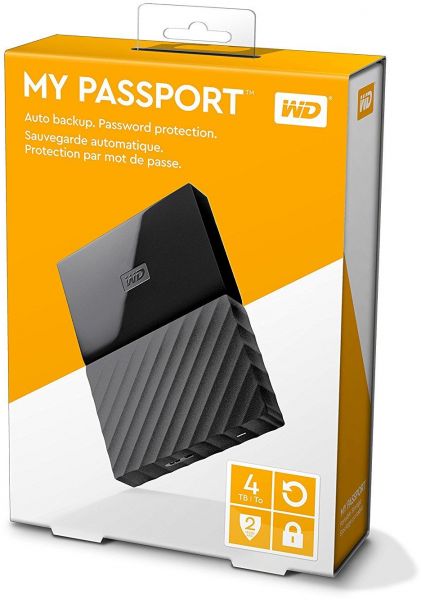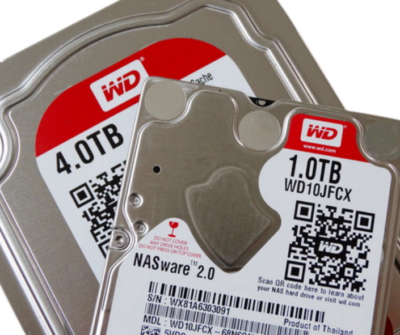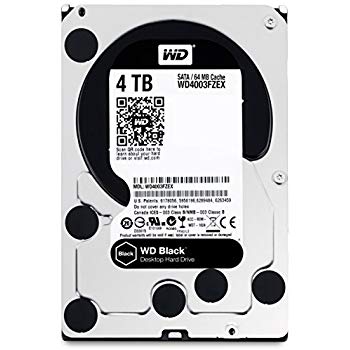Western Digital HDD Data Recovery
 Western Digital holds a large share of the global hard drive market. For many years, the company has introduced a series of innovations, distinguishing its logic from other competitors.
Western Digital holds a large share of the global hard drive market. For many years, the company has introduced a series of innovations, distinguishing its logic from other competitors.
In 2001, it introduced a series of ATA hard drives with 8MB cache, at a time when most hard drives of that era operated at 2MB.
Then, in 2003, it introduced the world’s first SATA drive that operates at 10,000 RPM: The Raptor, a 36GB drive with a seek speed of 6ms. A little later, it released a version with twice the capacity (74GB), which was also quieter than the 36GB version. Of course, over the years, other versions followed (150GB, 300GB, and 600GB).
Hitachi / HGST (Hitachi Global Storage Technologies), drives, since 2012, have been financially affiliated with WD (though the technology and architecture of the drives remain Hitachi / HGST).
It is worth noting that after the acquisition of HGST by Western Digital, HGST technology was also assimilated, resulting in us now seeing HGST internal drives inside Western Digital enclosures, with Western Digital stickers but HGST hard drives!
We also now see hard drives with Helium (He+), an HGST patent, now being released with a Western Digital sticker.
With this move, Western Digital has added the high-quality HGST drives to its arsenal, delivering a significant blow to the competition.
In recent years, Western Digital has introduced a new series of SMR drives, both in 3.5″ and 2.5″ form factors.
These drives belong to the SpyglassX, Palmer, Charger, Venicer (3.5″) families, among others. These drives have shown a series of significant issues:
Spyglass: Heads, Stiction, 2nd translator failure
Palmer: Heads, Stiction, Firmware
Charger: Heads, Stiction, 2nd translator, Media Damage
Venicer: 2nd translator, Heads
Especially the 2nd translator failure, which is the most common for these models, causes the drive to start, possibly make a slight knock, spin down, and immediately reboot doing the same thing again. In some models like the Venicer, the problem is so classic, so repetitive and accompanied by the ATA Register lights flashing, that we have dubbed the failure as “disco dance”.
Our experienced engineers have a 100% solution for this issue.
However, great care is required, as the repetitive reboot of the drive is accompanied by head clicks (since the power practically cycles), leading inexperienced individuals to blame the heads and open the drive unnecessarily.
These drives also react rather… abruptly when the heads are changed, requiring additional experience to handle them.
Be careful who you trust with your data recovery!
The most common problem with Western Digital drives is damaged heads.
The quality of the materials used in Western Digital drives is not the best, resulting in the heads being particularly fragile even without an apparent reason.
Additionally, the damaged heads are paired with poor quality platter materials (e.g., in the Charger or ArrowHD), which is not good for user data.
Another common issue with Western Digital drives is on the board (PCB). This failure does not occur as often as in the company’s older models, but even a single incorrect power supply can cause serious damage to the drive. We remind you that in no modern Western Digital drive is it possible to replace the board for data recovery without transferring the adaptive data from the old board to the new one. In drive families such as FBlite (e.g., WD10JMVW-*AJG*), this becomes even more complicated due to the uniqueness of the 4F Rom Module, while for families like Spyglass (e.g., WD40NDZW-*A8J*), the boards lock based on the board’s CPU (and ROM), and therefore must be transferred to a new board.
If your drive has such problems, then Northwind Data Recovery can recover your data.
In our laboratories in both Athens and Thessaloniki, we have specialized equipment with which we modify a PCB and with special software, we program it to correctly read the data from the drive. Western Digital external drives (Passport, MyBook, etc.) tend not to be recognized by the PC after connecting the USB to it. The characteristic sound of the USB is heard, but the drive is recognized as Passport 0731 (or similar) without access to the data, or it is recognized as MyBook in the devices but asks for formatting or does not assign a drive letter or recognizes it as WD BAD PCB. This is a very common failure resulting in the inability to access the data.
At Northwind Data Recovery, we see such failures daily and handle them successfully.
 In Western Digital drives, it is possible that as soon as they spin up, the heads start knocking from the beginning (listen to sounds from such typical Western Digital hard drive errors). Most of the time, this is a sign of damaged heads.
In Western Digital drives, it is possible that as soon as they spin up, the heads start knocking from the beginning (listen to sounds from such typical Western Digital hard drive errors). Most of the time, this is a sign of damaged heads.
The AV-GP heads normally park on the special ramp outside the platter area, but often after an error or improper shutdown, they fail or do not have time to return to the ramp and remain on the surface (STICTION).
Immediately after spin down, the heads stick to the surface and it is impossible to release them without the appropriate equipment and necessary experience.
Do not open the drive yourself – you will damage the platters and the drive will be unrecoverable. Do not believe the nonsense circulating on YouTube.

